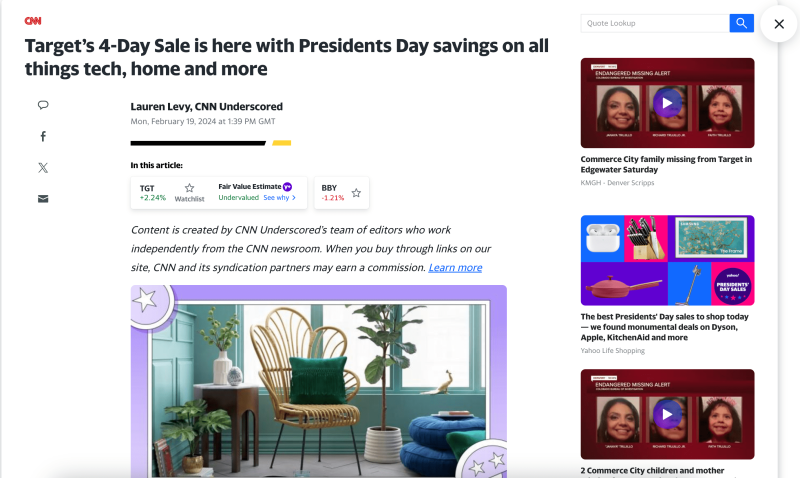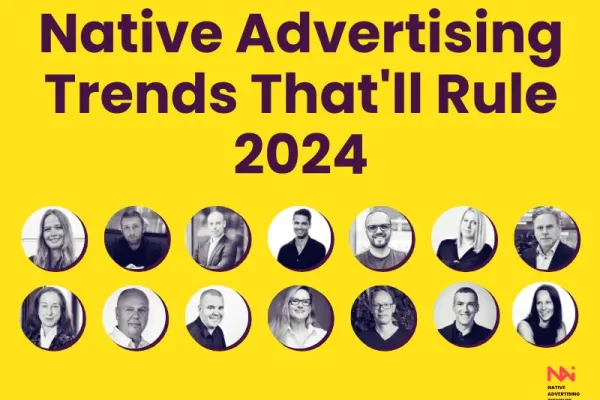
 Details
Details
If you’re finding it difficult to identify native advertising, you’re not alone. More than half of consumers find it tricky to spot native ads, causing distrust in the media landscape and damage to the brands.
It goes without saying that knowing how to spot native advertising is important for both publishers, consumers and brands. It ensures transparency, helps avoid unintentional clicks, and fosters a positive online experience.
But what exactly should you look for to tell that an article is indeed native advertising and not editorial content?
In this quick-guide, we'll share how to spot native advertising with ease. Whether it's labels, visual cues, or placement patterns, these insights equip you to navigate the digital landscape with confidence and a discerning eye.
Recommended: Best Native Advertising Spy Tools of 2024 [Free & Premium]
So How Do You Spot Native Ads?
1. Look for Content Labels
Native advertising isn't about hiding; it's about blending with finesse. However, there are some very clear tell-signs that the content you are reading is a native ad and not an editorial piece of content.
The best way to spot native advertising is by the labels attached to the content.
Typically either at the top corner of the content or at the bottom of the page. Labels like “Paid Post”, "Sponsored", "Presented by”, "Promoted”, or simply “Ad”, all clearly identify the content as native advertising.

An example of a piece of native advertising from CNN on Yahoo.com. The content is cleared marked as independent from the CNN newsroom.
2. Assess the Visual Harmony: Does It Blend In Too Well?
However, if, for any reason, you find it challenging to identify the content you're reading, there are alternative methods to discern the nature of the content.
Native ads are visual maestros, harmonizing seamlessly with the surrounding content. After all, that’s why they tend to work so great.
If an article or image appears to blend too well with the site's overall design, it might be a native ad.
Pay attention to the color palette, fonts, and general aesthetics. Native advertising aims to be subtle, but an astute eye should be able to easily identify promotions, or sponsored posts, from editorial content.
3. Placement Patterns: Native Ads Have Their Spots
Unlike random pop-ups, native ads have preferred spots on a webpage.
They typically reside at the bottom of an article, appear in a sidebar, or nestle within a stream of recommended content.

The bottom or footer of an article is one of the common areas of a website where you may find native ads.
Recognizing these patterns of website platement helps you spot the native ad. Familiarize yourself with common placements, such as the "Recommended Articles" section, to spot native ads with ease.
Recommended: The top advantages and disadvantages of using native advertising.
4. Check the URL
Native ads often lead users to different pages, seamlessly continuing the narrative. Another simple way to spot native ads is to check the URL.
If the link appears unrelated to the site you were on, you've likely stumbled upon a native ad.
Though it may seem tedious, paying attention to these details ensures a positive online experience and guards against unintended clicks.
5. Analyze the Tone: Does It Ring Authentic?
Native ads mimic the tone of the platform, but sometimes there's a subtle discrepancy.
Analyze the writing style and depth; genuine content often has a more authentic voice.
Native advertising strives to engage without being overt, but an incongruity in tone is another clue you can use to distinguish between sponsored content and editorial content.
Recommended: 14 Native Advertising Trends That'll Rule 2024 [Insider’s Guide]
6. Investigate the Sponsor: Powered by Trust
Look for labels like "Powered by" followed by the name of a native ad network, such as Outbrain or Taboola, when you are trying to spot native ads.
These labels aren't meant to deceive; they're part of ethical advertising practices.
Investigating the sponsor behind the ad fosters trust and ensures a positive relationship between advertisers and consumers. Knowing who's behind the content is key to informed decision-making.

This example of native advertising is easy to spot and identify. It's clearly marked as paid content – not once, but twice.
7. Social Media Integration: Sponsored Content in Your Feed
Native advertising is highly prevalent on social media platforms.
When you’re trying to spot native advertising on social media, the most important thing to keep an eye out for are posts labeled as "Sponsored" or "Promoted" in your social media feeds.
Recognizing sponsored content and native ads on these platforms adds another layer to your native ad detection skills, ensuring a positive experience even when scrolling through social feeds.
Final Words
It’s safe to say that native advertising is here to stay, and it provides great value for marketers, publishers as well as consumers when done right.
Knowing how to spot native advertising will empower yourself to make informed choices, ensuring a positive online experience for consumers as well as marketers.




